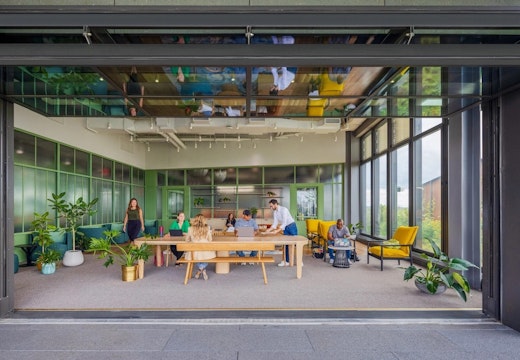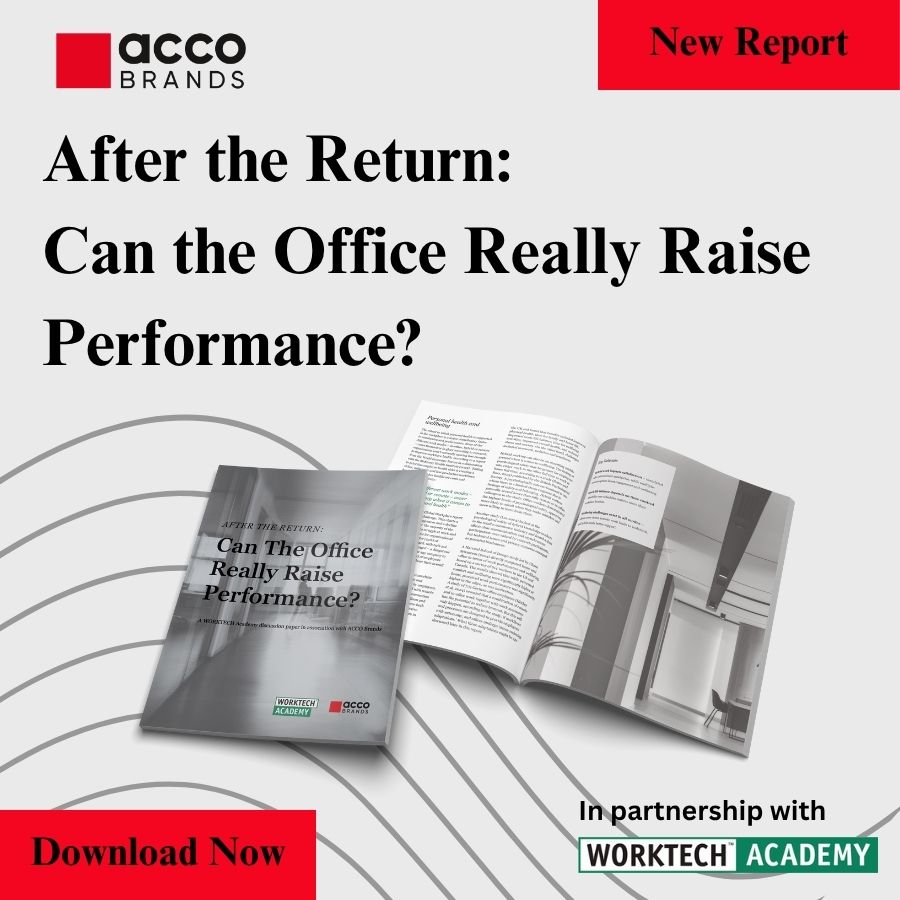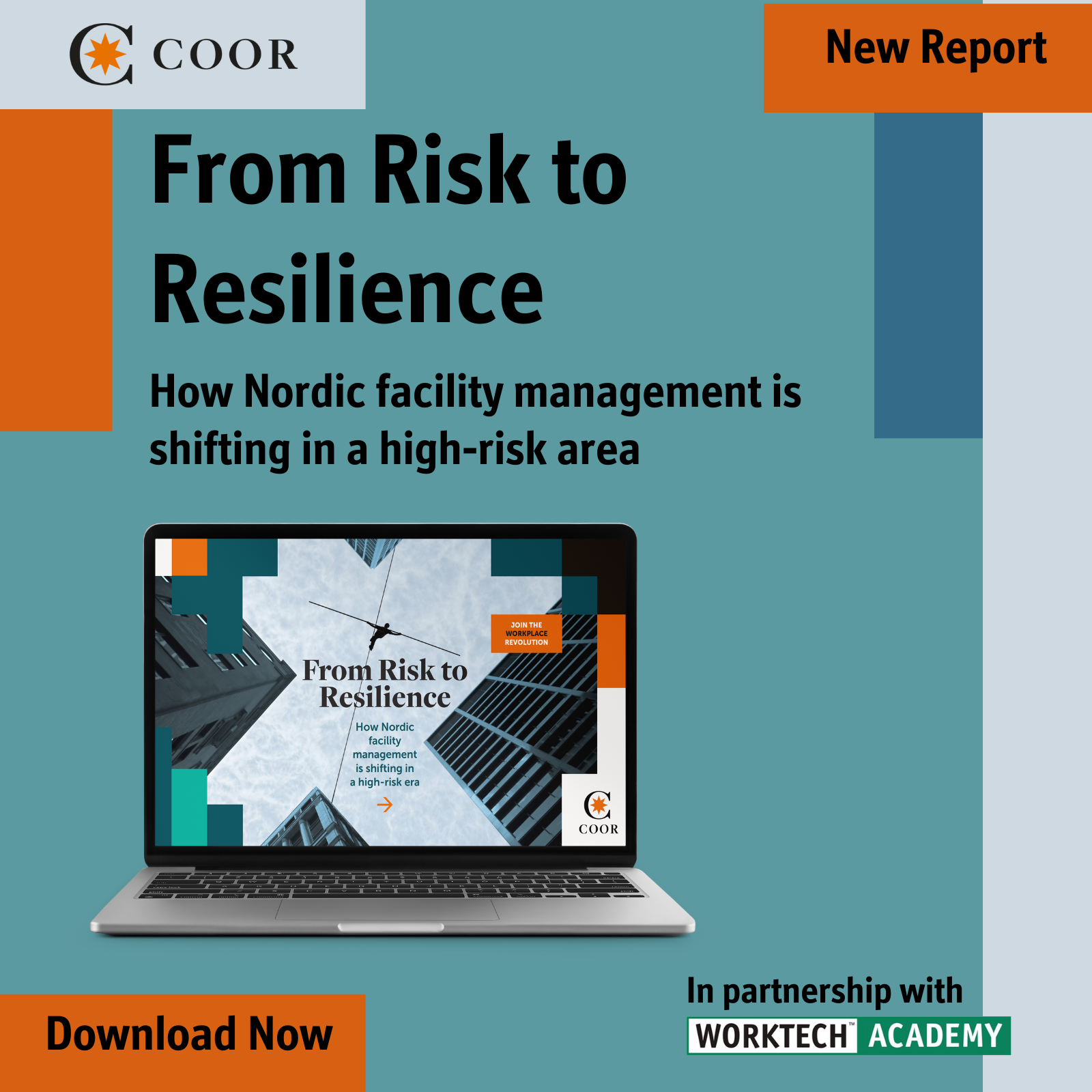How purpose-led workplaces can help navigate today’s office challenges
From underused offices to employee frustration, the answer lies in creating intentional, purpose-driven workplaces that truly support people
From empty seats to The Hunger Games experience of trying to find and reserve a workspace, the struggle to make today’s office environment effective is real. Employers are grappling with a myriad of issues, from workforce dynamics to workplace logistics.
Organisations worry about underutilised spaces and are uncertain about the effectiveness of hybrid work models. They want their employees to be engaged and motivated when they come into the office. And they need spaces that can adapt to unpredictable changes. While companies grapple with these challenges, employees are left questioning what the value of the office is now they can work from anywhere.
Where has the pendulum stopped?
There is no new paradigm; the workplace pendulum is still swinging and will likely never stop. The indecision about returning to an office-first approach is understandable. But there is a way forward. Where the pendulum settles will depend on the unique needs of the business. To get the best value from the workplace, it must be intentional, purpose-driven and meet the needs of the employees. It should be able to adapt to an inevitable ‘swing’ in the future.
After years of change in the workplace, both employers and workers are looking for answers. But first, we must learn to ask the right questions. Rather than asking ‘What should the office look like?’ we should instead be asking: ‘What should our office do for us?’ If purpose is the driving force behind employee engagement, shouldn’t an organisation’s physical space reflect that motivation? The answer is simple: every space must work to support the business, operations, and people of an organisation. That’s the definition of a purpose-driven workplace.
Attracting the right talent
Talent is everything. Attracting and retaining talent can make or break an organisation. And people have a need to belong. Professionals want to see their efforts as part of something bigger and more meaningful. Organisations that foster a sense of belonging in the workplace will attract and retain talent.
Rather than asking ‘What should the office look like?’ we should instead be asking: ‘What should our office do for us?’
Research shows that a high level of engagement is profitable. Gallup’s State of the American Workplace reports that ‘companies with higher engagement are 21% more profitable and have better financial outcomes overall, outperforming the S&P 500 after a year.’ And a Microsoft analysis from 2023 comes to the similar conclusion that work environments that foster a sense of purpose and belonging will deliver benefits in talent recruitment and productivity.
The decisions employers make about the office and its use directly impact the success of the business. The workplace impacts culture, workflow, productivity, attraction, and retention. And all of these affect the bottom line.
The pitfalls of ignoring purpose
Workplaces that do not lead with purpose can easily fall into pitfalls that will create challenges for the business in the future. There is a clear sequence to disengagement if purpose isn’t considered from the outset.
Unresponsive spaces in the form of identical workstations don’t consider the diverse needs of different groups or tasks. It lacks a variety of spaces, such as call rooms, small meeting rooms, and collaborative areas, which support various work modes throughout the day.
We’ve seen companies consolidate into smaller footprints, sized to an average number of desks they require. They think, ‘we can fit in there because of our hybrid schedule.’ But they haven’t defined a vision around the work they expect to do each day. They haven’t recognised the different groups that work there and their needs. Often, they miss the mark with this approach.
Frustrated users: if employees struggle to find suitable areas for their tasks, it leads to frustration and lost productivity. Without clear guidelines or expectations on how to use the space, they are stuck with a chaotic and inefficient work environment.
One client we worked with recently was having problems with its existing space. Over several decades, it had modified its office. The office had become a Frankenstein monster; it no longer served the client well. Staff couldn’t find conference rooms. They were arranging their own workstations and 60-inch-high panels into makeshift ‘meeting rooms.’
Low engagement: in this scenario, employees are not motivated to come into the office. They question the value of being there. And the organisation hasn’t shared how the space and workplace support its core mission. Imagine that you come into the office and it’s a free-for-all with a sea of workstations. You’re not able to sit with the people you collaborate with. You’re in a space that is loud. And it’s made worse when you need a focus space. Without a coherent plan or a variety of spaces designed for you to move through, you might wonder, why am I here at all?
A balancing act
Employers are struggling the balance the different issues around the workforce and the workplace. They want to use their space efficiently, while still meeting the needs of their employees. For some organisations this means consolidating real estate to save money, while others are now outgrowing the shrunken spaces they took on when remote work was the norm. Other top considerations for workplace leaders include:
Boost employee engagement: employers want to help people stay engaged and motivated to come into the office. They want the office to satisfy the needs of their people.
Navigating hybrid work: many companies still offer some mix of flexible and on-site work. Naturally, they’re concerned with how to implement hybrid work models effectively. They need to know the right mix of spaces and how to support employees working both remotely and in the office.
Scalability: many firms today are dynamic – they scale with their opportunities for growth. So, they are naturally drawn to spaces that are flexible enough to allow for change. Change can come from future growth, consolidation, or unpredictable changes in work patterns or the marketplace.
What is a purpose-driven workplace?
Purpose-driven workplaces align with an organisation’s vision. In designing the headquarters for Air Products, our client had a vision to support various work modes and foster personal connections among its staff. It wanted the ability to separate the workplace from community space. Air Products saw the community space as a vertical neighbourhood for connection, collaboration, and socialising.
Workplace design should meet the diverse needs of employees. This allows for both focused individual work and collaborative activities. We designed the Air Products headquarters with a highly collaborative public main street and private neighbourhood spaces. Open staircases connect the vertical neighbourhoods. The idea is that people constantly need to get up to move if they need to meet or focus on a task. This supports wellbeing as they can choose preferred environments.
It supports specific operations and workflows. The design of the purpose-driven workplace should be intentional, with spaces created to support specific functions and workflows. We can put some intention behind the spaces in the workplace, their design, organisation and expectations around using them. Staff feel supported in their roles.
It enhances employee engagement and wellbeing. The environment should foster a sense of purpose, belonging, and wellbeing among staff members. It should encourage them to feel part of a larger effort.
Design can enhance workplace culture. If you are sitting in a place that supports your needs – and going into the office on similar days as your collaborators – you feel a part of a bigger picture. You can see what you’re contributing to. The workplace makes sense. People are attracted to feeling a part of something bigger than themselves and that they’re making a difference.
It accommodates change. The workplace should be flexible enough to adapt to changes in work patterns and future growth, providing a variety of spaces that can be used for different purposes.
It comes with expectations. There should be clear guidelines on how to use the spaces effectively. This helps employees understand the purpose of each area and how it supports their work.
Initially, the space was overcrowded. A lack of clear guidelines was causing frustration. Team members didn’t know which spaces were meant for which tasks. We developed a new workplace strategy that featured guidelines that identified expectations for space use. This led to better collaboration and a stronger sense of community.
Sometimes, we can realign expectations by simply helping staff understand how the space supports their workflow or by moving things around during an office reconfiguration. Other times, a redesign is required.
The workplace should aid interactions, mentorship, and collaboration among employees. It should enhance their overall experience and productivity. These elements work together to create a supportive and engaging environment that aligns with both organisational goals and employee needs.
The vertical neighbourhoods at Air Products feature various settings where people can meet and collaborate. This includes open and closed spaces, different postures, and diverse room sizes. The design clearly separates public and private areas. Studies show mentorship can be a big draw to the office. The space fosters a workplace culture that encourages face-to-face and personal contact that remote work can’t offer.
The purpose-driven workplace thrives as a result of a well-balanced ecosystem. There’s no one-size-fits-all solution to today’s workplace needs. It depends on a well-designed space, clear expectations, and supportive workplace culture.
The purpose-driven workplace does not happen by chance. We need to develop it through an intentional process that asks the right questions and considers the whole organisation.








